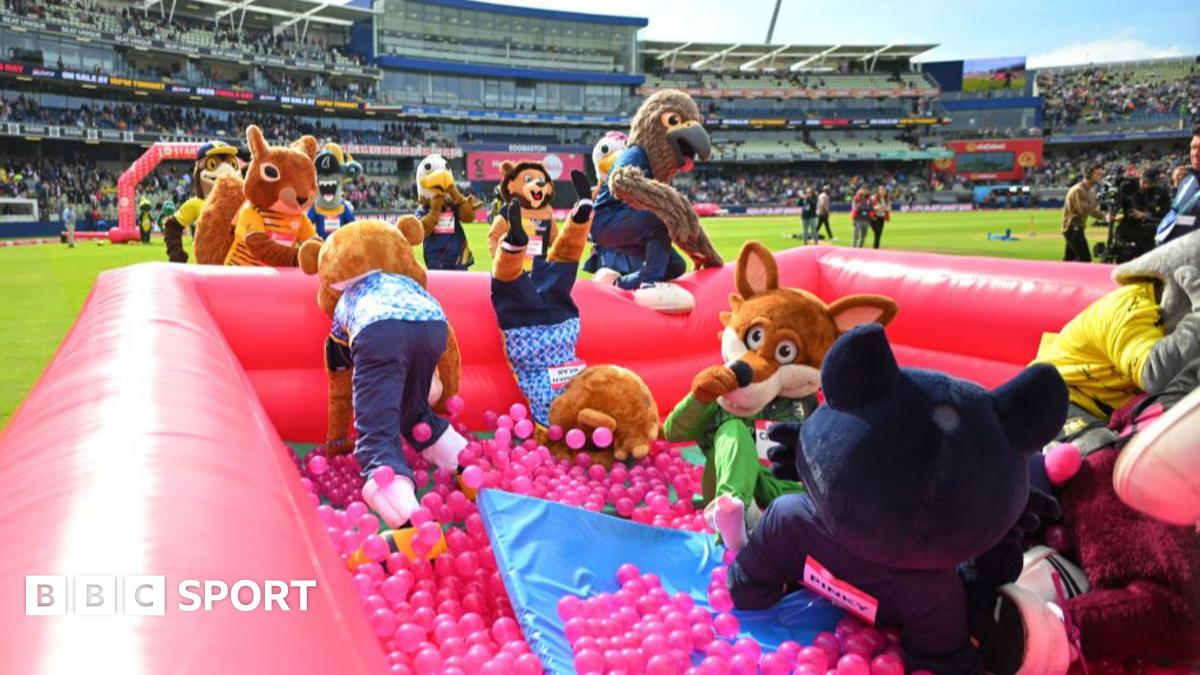By Michael Cohen
Copyright foxsports

Their very public, very pointed plea hit social media at 3:34 p.m. local time on Sept. 15, five days before then-No. 25 USC kicked off against Michigan State at the Los Angeles Memorial Coliseum in a nationally televised matchup. Signed by Trojans’ head coach Lincoln Riley and first-year general manager Chad Bowden, who has reanimated the personnel department since joining from Notre Dame, the 12-paragraph appeal was designed to engender fan support at the onset of Big Ten play, to drum up enthusiasm around a program that has largely treaded water ever since Pete Carroll left to coach the Seattle Seahawks in 2010. Amid such a pivotal campaign that might well be viewed as the tipping point for Riley’s regime — one way or the other, depending on how the next few months unfold — those in charge of an unexpectedly long rebuild were doing everything they could to get the locals on their side. As we continue to find more within ourselves as a team, we ask today that you join us. To our students: you are the tip of the spear. You lead the charge, and we feed off of your energy. The earlier you arrive, the longer you stay, and the louder you scream, the greater our chances at victory. On Saturday, we need you to bring the juice — for four quarters. We will do the same. Season ticket holders: you are our backbone. You give us strength and power, and we need you now more than ever. Just as we preach to our team to start fast, we need you to arrive early and ready to overwhelm our opponents. You make a difference. At face value, there’s nothing unusual about the leading figures of an athletic program making a direct overture to their base, especially when the goal is to incubate or extend good faith. It’s why Bill Belichick, freshly installed as the head coach at North Carolina, bought pizzas for the school’s fraternities ahead of a basketball game against archrival Duke last winter. It’s why former Michigan basketball coach Juwan Howard, who led his alma mater for five seasons, made an annual tradition of handing out donuts on the first day of classes. It’s why Minnesota head coach P.J. Fleck recorded a check-in video during the COVID-19 pandemic that was distributed to the entire student body. Colleges are, after all, communities. But none of those places and programs have a history that compares with USC, where the glass cases of the John McKay Center proudly commemorate 11 national championships and more Heisman Trophy winners — eight — than anyone else in college football history. It’s a place where Carroll won 83.6% of his games and captured two of those national titles during a dynastical run that captivated the sporting world from 2001-09, a stretch in which the Trojans broke the Pac-10 record for attendance in four straight seasons, one sellout after another. Rappers, actors and professional athletes all frequented practices and games for the chance to be around a program that quickly became synonymous with Hollywood. There was nothing cooler than playing football at USC. “It was a different beast, man,” former USC quarterbacks coach Yogi Roth, now an analyst for Big Ten Network, told me. “It was the program in the country.” That certainly wasn’t the case in late 2021 when USC scooped Riley from Oklahoma with a 10-year contract reportedly worth $110 million. By then, a little more than a decade after Carroll’s departure and the sanction-strewn fallout that came with it, the Trojans had stomached four uneven seasons under successor Lane Kiffin, two disappointing years under Steve Sarkisian and a half-decade unraveling under Clay Helton. That meant Riley’s job, from the moment he was hired through this week’s date with No. 23 Illinois (noon ET Saturday on FOX), has been to convince USC fans that the present is worth caring about at a time when promises of consistent winning and championship contention are repeatedly pushed into the future. Thus far, Riley owns a 30-14 record in a little more than three seasons, which is only the eighth-best winning percentage (.682) in school history. Still, there is genuine belief in and around USC’s program that the wheels are now spinning in the right direction, that the university’s financial and institutional arms are legitimately aligned despite last year’s disappointing 7-6 overall record and sub-.500 mark in conference play. Some of that confidence radiates from an unbeaten start to the current season in which the Trojans’ offense finally looks like a trademark Riley unit, with averages of 52.5 points and 583.8 yards per game. But much of the optimism swirls around a 2026 recruiting class that currently sits atop the national rankings with two months and change remaining until the early signing period, a group that already has the same number of commitments from California prospects — 17 — as Riley’s last two classes combined. If Riley and his staff can transform those pledges into signatures, which necessitates the continuation of strong play this fall, then USC will really start to feel like USC again by fortifying its future with local talent. “I think what USC has done in the last handful of months with Lincoln Riley and Chad Bowden is a version of what we talked about,” Roth, who lives in Southern California, told me. “They have modernized what the Pete Carroll era did. And if you remember how we talked about that, it was recruiting California as hard as humanly possible and only leaving [the state] for a first-round pick. “There’s a real groundswell of momentum [among California high school players] saying something they have not said consistently since Coach Carroll was there, which is, ‘I want to go play at the Coliseum. I want to go represent SC.’” The renewed faith among high-end California prospects in what Riley and Bowden are building has reminded those with ties to the program of how effective Carroll’s homegrown recruiting philosophy truly was. A little more than 73% of the high school recruits who signed with USC during Carroll’s tenure were in-state prospects, according to FOX Sports Research, including 40 players rated among the top-10 prospects in California and four who were deemed the state’s best overall player. The criterion for Carroll and his assistants to pursue prospects beyond California’s borders was the unquestioned potential to become a first-round pick in the NFL Draft. Anything less than that could be found locally. And in the end, the results of Carroll’s strategy spoke for themselves: Twice, the Trojans inked the country’s No. 1 recruiting haul during his tenure, in 2005 and 2006, respectively, and their average national ranking across nine classes was 2.8 — a staggering run of success that translated to seven consecutive seasons with 11 or more victories. Carroll’s immediate successors, Kiffin and Sarkisian, both of whom had been on staff at USC, maintained the same roster-building philosophy by constructing teams featuring at least 70% in-state prospects, with the later soaring to 78.4% during his brief tenure. The percentages began to dip when Helton, who never coached under Carroll, was promoted from offensive coordinator to head coach in 2015, kickstarting a seven-year run in which just 58% of the Trojans’ high school signees were Californians. That figure plummeted to 42.6% in-state prospects during Riley’s first three cycles while he espoused the benefits of nationwide recruiting, even as USC’s on-field win totals slipped from 11 to eight to seven over the last three seasons. It became harder and harder to overlook the fact that Riley’s 2025 class included prospects from 13 different states, whereas Carroll’s classes from 2002-09 were represented by players from an average of 5.75 states per year. “It is a different era,” Riley told me last fall. “Kids are traveling more with all of the obvious changes [like NIL and revenue sharing]. But like I said, we have tried to make it a point that we don’t want to take the California kid just because he’s the California kid. We want to take the California kid because if he was in any other state, we would recruit him, too, because we think he’s the right fit. And we’ve tried to really stay committed to that.” Such steadfastness certainly held true through Riley’s first few recruiting cycles, much to the chagrin of certain fans who had grown accustomed to the California-heavy approach of yesteryear. But with the early framework of the 2026 class, which happened to coincide with a restructuring of the Trojans’ personnel department, came a familiar emphasis on dedicating significant resources to the pursuit of in-state prospects — be that by strengthening relationships with traditional high school powers like Mater Dei and Santa Margarita Catholic, which have five combined players pledged to USC in the current cycle alone; developing a more uniformed approach for how staffers recruit when they’re on the road; or doubling down on interactions with boosters to remain competitive in this new, financially driven era. With six commitments from players ranked among the state’s top-20 prospects — including five-star tight end Mark Bowman, the No. 15 overall recruit in the country regardless of position — Riley has already exceeded his previous single-class high of four while equaling the final tally from his first two classes combined. A significant chunk of that credit also goes to Bowden, who was widely regarded as one of the most effective general managers in college football when Riley hired him away from Notre Dame in January, evidenced by the Fighting Irish’s string of top-10 recruiting classes in 2021 (ninth), 2022 (seventh) and 2024 (ninth). In taking over USC’s personnel department, Bowden reduced the strain on both Riley, who doubles as the Trojans’ offensive playcaller, and then-general manager Dave Emerick, a former colleague of Riley’s at Texas Tech and a man whose wide-ranging experience — he’s worked as a football chief of staff, recruiting coordinator and athletic department administrator — was better suited for behind-the-scenes work than the increasingly visible GM spot. Bowden’s presence has afforded Riley the opportunity to dedicate more of his time to coaching the offense and allowed Emerick to transition into a role as senior associate athletic director of football administration. In the meantime, Bowden, who is the son of former Cincinnati Reds general manager Jim Bowden, fleshed out his personnel department with new hires rich in recruiting-intensive backgrounds: Dre Brown, formerly of Illinois, is now the assistant general manager; Max Stienecker, formerly of Wisconsin, is the executive director of player personnel; and Zaire Turner, formerly of Notre Dame, is the assistant athletic director of recruiting operations. Atop the totem pole sits Bowden, who infuses the program with an innovative, organized and public-facing presence capable of managing the Trojans’ player-acquisition efforts largely on his own. “He’s one of the top off-field recruiters in the country,” Steve Wiltfong, the former director of recruiting at 247Sports and now the vice president of national college football recruiting and transfer portal for Rivals/On3, told me. “He’s engaged with top prospects, he’s relentless in their recruiting, he’s creative, and he believes in what he’s working on. At Notre Dame, he helped the Irish put together a roster that played for the national championship, and now he’s at USC to help put together a roster that he wants to go to another level and help win the national championship.” To what degree the path toward realizing that ambition includes a steady influx of California prospects in future classes remains to be seen. Roth, the former USC quarterbacks coach and current Big Ten Network analyst, believes the attention and notoriety being paid to the Trojans’ 2026 group could be enough to catalyze a legitimate philosophical shift, one that brings Riley closer to the formula that worked so well for Carroll two decades ago. Wiltfong, meanwhile, sees the makeup of USC’s top-ranked class as something of a geographic aberration based on how highly the coaching staff rated this year’s batch of in-state prospects, something he said Riley discussed during his visit to Los Angeles earlier this year. The Trojans have yet to earn a commitment from any prospect in the 2027 cycle. What can’t be disputed, however, is the influence local products are having on USC’s sizzling start to the season, a dominant run of four straight wins that placed the Trojans at No. 21 in the latest AP Poll and invites fans to dream about the College Football Playoff. Of the seven offensive players that have logged the most snaps so far this year, five of them hail from California, including star receiver Makai Lemon. And of the nine defensive players with the greatest percentage of playing time through the opening month, four of them were in-state recruits, headlined by standout safety Kamari Ramsey. Even backup quarterback Husan Longstreet, who has earned 41 snaps in relief of starter Jayden Maiava, is a former five-star prospect from nearby Corona, California, and instantly became one of Riley’s biggest recruiting wins when he flipped his pledge from Texas A&M last November. “The best high school football in America is played in California,” Bowden said during his introductory news conference. “And we’re going to do everything that we can to get the very best players that are in California to stay here to play for USC.” It’s a much different tune than what USC was singing during the early days of Riley’s tenure. And it’s a whole lot closer to the blueprint Carroll followed when leading the Trojans to championships. Michael Cohen covers college football and college basketball for FOX Sports. Follow him at @Michael_Cohen13. Want great stories delivered right to your inbox? Create or log in to your FOX Sports account, and follow leagues, teams and players to receive a personalized newsletter daily!



